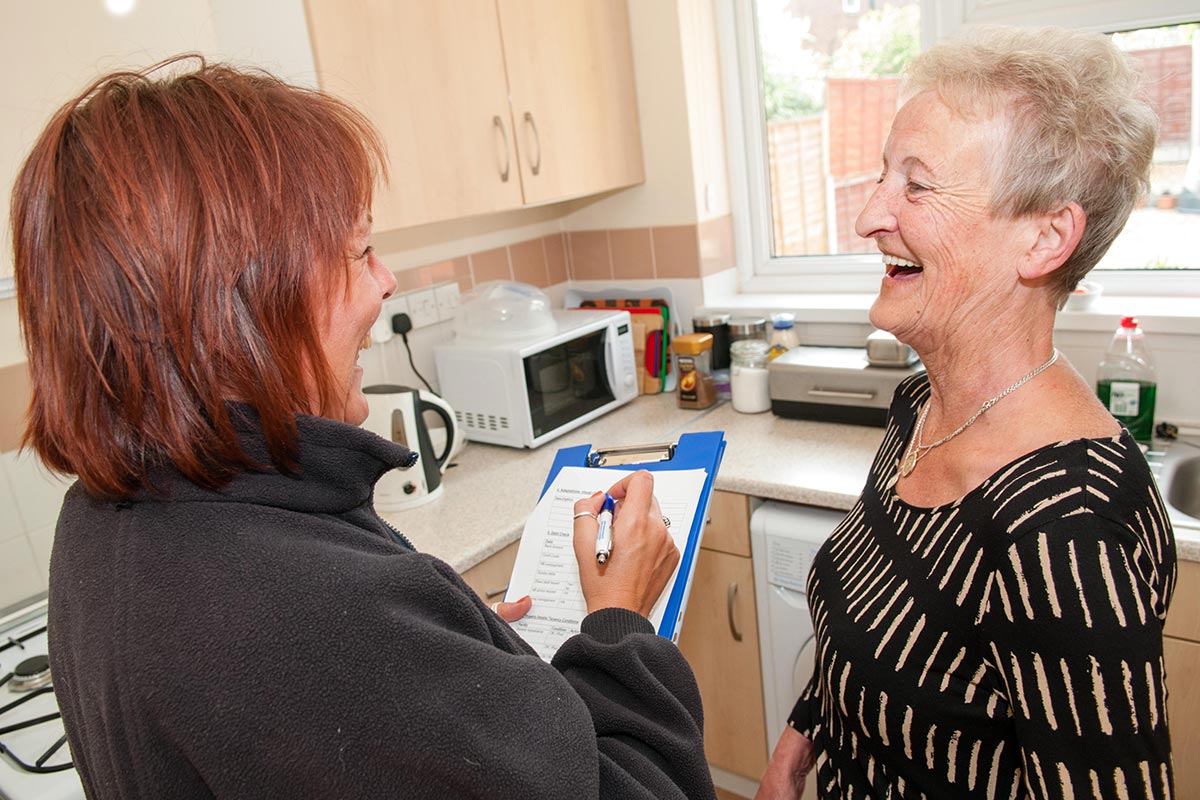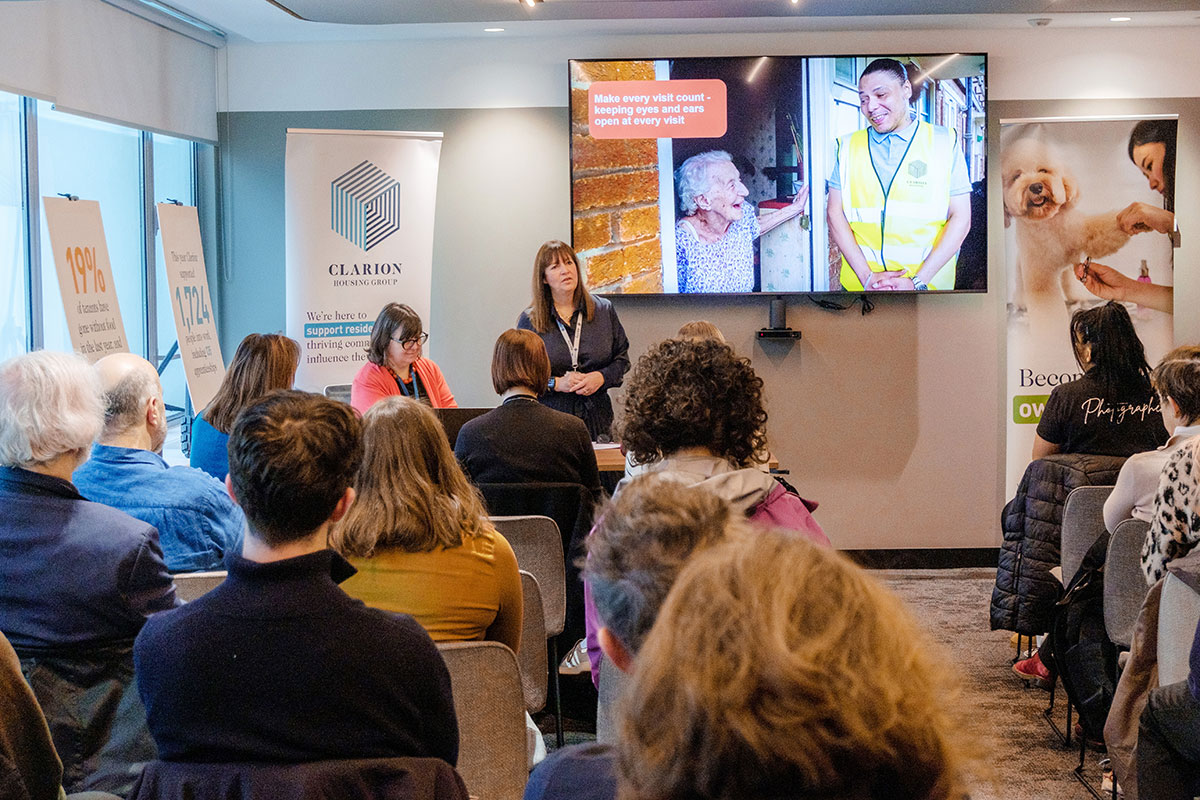A rise in frontline assault has seen an increased need for security and protection. How effective are they?
We hear from Naz Dossa, chief executive of employee safety technology business Peoplesafe, about how housing associations can increase their employees’ security when conducting home visits

In association with:
![]()
New tenant satisfaction measures mean that many social landlords are increasing face-to-face communication with residents. While this usually strengthens the landlord/tenant relationship, all roles that involve interacting with the public or going into people’s homes carry a risk of abuse.
A previous Inside Housing analysis of data from 28 housing associations and 139 local authorities found that physical assaults against frontline workers were on the rise. Verbal assault was common, with one in every 14 staff members experiencing an incident in 2018-19. Worryingly, this was not always at work, with frontline workers increasingly encountering harassment out of hours on social media.
With this in mind, it is important for social landlords to have correct risk assessments in place for frontline staff and lone workers, and to deploy technology that enables staff to seek help if they are in danger.
Inside Housing speaks to Naz Dossa, chief executive of employee safety technology business Peoplesafe, to find out about the ways in which housing associations are protecting their staff, and the challenges they face.
How are housing associations protecting their frontline staff?
It is important to embed a culture of personal safety into an organisation, so that it becomes second nature for employees to follow set safety policies. Landlords can also give staff training in personal safety, de-escalation techniques and conflict resolution. It’s vital so that they can calm tensions and avoid situations that threaten their personal safety.
However, as a last resort, staff may need to call for help. That is why a majority of housing associations make it mandatory for their employees to carry a personal safety device and/or download a safety app to their phones.
Activation of our alarms is easy. With a safety device, the user presses a button for four seconds, which sends a call through to a 24/7 alarm-receiving centre. With the app, users press the side button on their phone four times, which overrides the pin lock and raises an alarm discreetly.
Each solution has a two-way communication facility so alarm controllers can talk to the user, and the user can reply letting them know that they are safe – or that they still feel threatened.
What impact can effective safety and security measures have on employees?
Essentially, they give a level of confidence and reassurance to frontline and lone workers. Employees are a lot more aware of their personal safety and the intrinsic link it has to their mental health and well-being, which ultimately affects their job satisfaction. For employers, job satisfaction has a huge impact on recruitment and retention, which fundamentally affects their bottom lines.
We carried out research last year investigating employee personal safety concerns. There were 2,081 survey respondents and the results indicated that 22% of former frontline or lone workers left their roles because of concerns for their personal safety. We also found that, if the right safeguards were in place, 50% of workers would be more willing to take on a frontline role in the future. Meanwhile, 57% of employers we surveyed underestimated their employees’ safety concerns.
Are there any examples of devices working in practice?
I am aware of housing association customers whose employees have experienced a range of personal safety situations, from racial abuse to being caught up in physical struggles with tenants. One housing association we work with has its office located within a tenant block. When disgruntled tenants tried to physically force themselves inside, staff did not feel safe and activated their alarm.
We also know of a frontline worker who was visiting a supported housing hostel, but was unable to leave because they were being threatened by a resident in the garden. On that occasion, they activated their alarm and police were on the scene within six minutes and accompanied the worker so they could leave the building safely.
Where does a housing association start when assessing staff security measures and protections?
The first thing to do is carry out a thorough risk assessment process and create a clear lone-working policy. When it comes to choosing personal security devices, employees have to be involved in the selection process. For example, we’ll set up a lone-working project group within an organisation to encourage discussion among frontline workers and their managers, then discuss different solutions with them to find the best fit for their needs.
Unions can also get involved at this stage. It can be stressed that these are safety devices, not tracking devices, and that location data will only be accessed if the employer is concerned about a user’s safety. Once everyone is happy, everything can be written into policy.
How does a housing association decide what safety device might be suitable for their employees?
By involving them at the outset to discuss which devices are most appropriate for their needs. For example, repairs and maintenance teams usually like the idea of a fob device that fixes to their belt and doesn’t get in their way while they’re working. Housing officers usually prefer to attach a device to their lanyard because they always wear one for ID purposes anyway.
Alternatively, a phone app might be the best choice. Some landlords have asked about body-worn cameras – but as officers have to get permission from tenants to record when they are visiting their properties, this tech is not necessarily suitable in these circumstances.
In numbers
22%
Percentage of workers who had left their roles because of concerns for their personal safety, according to Peoplesafe research
1in14
Proportion of social landlord staff who were verbally assaulted in 2018-19, according to Inside Housing data analysis
What challenges are involved in putting these measures in place?
The biggest one is administration. Maintaining user data and reporting on service usage is key to success, which is why we have a dedicated team to proactively support internal teams and drive adoption.
Then an escalation path needs to be mapped out: what happens when a user activates an alarm? The alarm receiving centre will contact the police if it’s a genuine alarm – but who else needs to be contacted within the organisation so that it can start its own internal processes?
How effective can safety and security measures be?
Workers can train to avoid or de-escalate situations – but they can’t plan for the unknown. We know of one frontline worker who was attacked with a hammer by a mental health patient as they were leaving a property. Their colleague escaped and raised the alarm, but was so panicked by the situation that they couldn’t provide information about their location.
However, we had their GPS co-ordinates and got an ambulance to them in about three minutes. We were later told that the quick response time probably saved the employee’s life.









